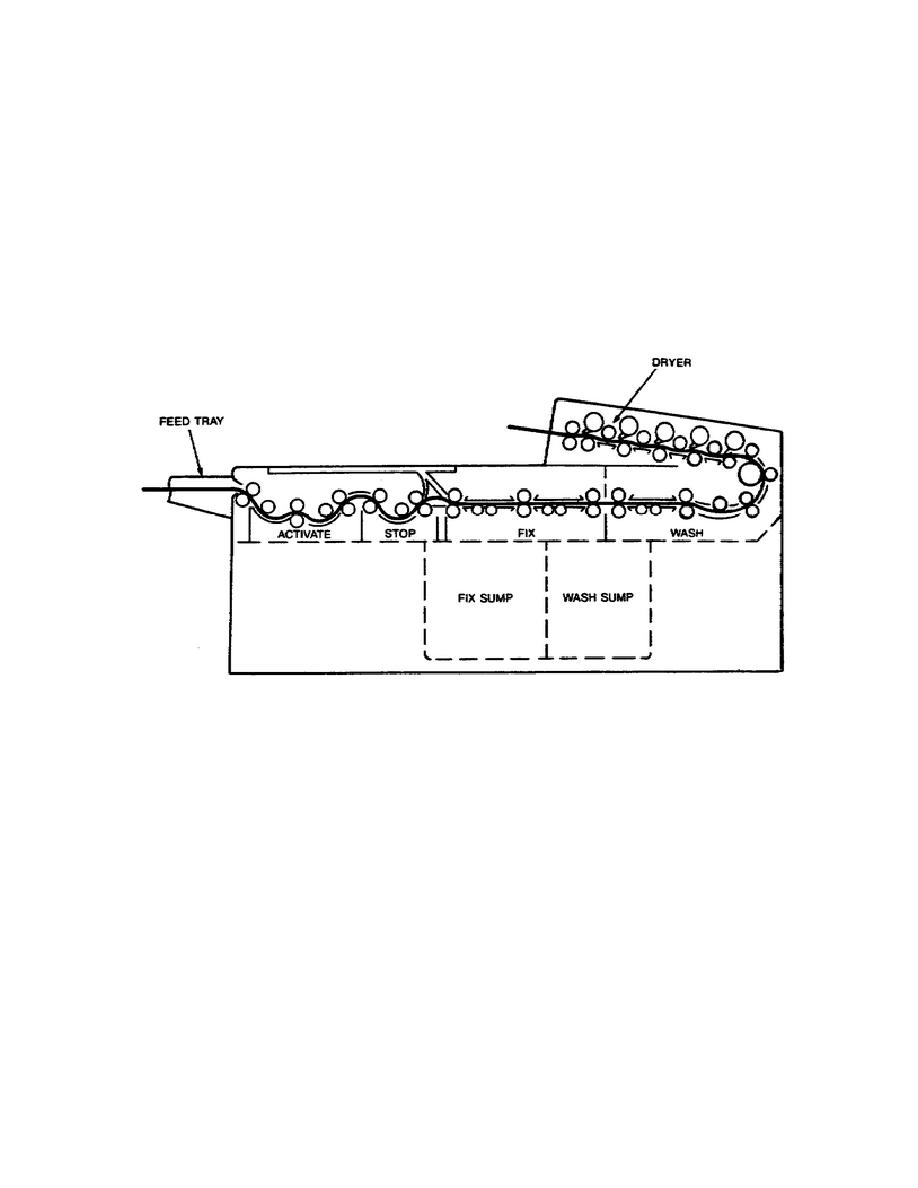
5.
Stop Bath. The first pair of transport rollers in the stop bath feed the print down into the stop bath
solution, which requires about 5 seconds to stop the developing action to neutralize the alkalinity of the activator
remaining in the paper emulsion.
6.
Fixer. The three processing factors that determine the rate of a fixing process are formula, temperature
and rate of agitation.
a. The most time-efficient fixing ingredient commonly used is ammonium thiosulfate, the ingredient
used in Kodak Rapid Fixer. This is also used in Kodak Royalprint Fixer. There is a certain concentration of
fixing agent that fixes fastest; it is neither the least nor the greatest concentration possible, but is at a certain
intermediate level.
Figure 3-6. Activation process
b. When the Royalprint Fixer concentrate is diluted 1 to 3 with water, the best concentration is achieved.
Increasing the temperature increases the function rate. The temperature of the fixer is kept at a normal 43,C
(110,F). In order for the prints to stand this temperature without deterioration, a special hardened emulsion is
used in the papers.
c. The print is fixed using fountain agitation in a narrow chamber about 3/16 inch in height. The high-
turbulence fountain jet agitation in the relatively low chamber helps fix the paper rapidly. By keeping the paper
close to jet openings, the rate of agitation is increased. By keeping the volume of the chamber relatively small the
rate of change of the fixer in the chamber is increased.
32



 Previous Page
Previous Page
